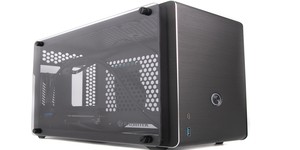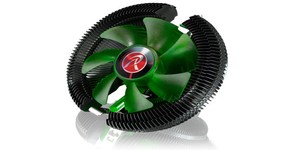
Cooling Performance
For this review, neither of our usual small form factor case test rigs were appropriate, as both use a GTX 980 reference card that's simply too big for this case. The Radeon R9 Nano seemed like the logical choice for a replacement, as this actually fits the 170mm GPU restriction in the case's specifications. However, a quick look at the case revealed that there was actually more room than this for graphics cards, and as luck would have it we still had the Zotac GTX 1080 Mini on our desks. By removing the upper drive cage (which may not actually be necessary but gives the GPU more room to breathe), we were able to fit this 211mm long GPU into the Metis Plus even with a non-modular ATX PSU installed.The rest of the test system was the same as our regular small form factor with tower cooler rig, and thus the test hardware was as follows:
- CPU: Intel Core i5-4670K at 4GHz (40 x 100MHz, 1.15V)
- Graphics card: Zotac GeForce GTX 1080 Mini 8GB
- Motherboard: Gigabyte GA-Z97N-Gaming 5
- RAM: 4GB G.Skill TridentX DDR3 2,400MHz
- SSD: OCZ Arc 100 240GB
- PSU: Fractal Design Integra M
- CPU cooler: Noctua NH-U9s
As usual, we disabled the motherboard's onboard CPU fan control and all CPU power management features, and the CPU fan was fixed at 7V with an adaptor. For the graphics card, we locked the fans at 37 percent (the minimum value) using MSI Afterburner. The system is loaded using Prime95 25.11 and Unigine's Heaven 4.0 benchmark. We use CoreTemp and GPU-Z to monitor the temperatures, taking the maximum values after 15 minutes - enough time for the readings to plateau. As this is a unique test setup for this chassis, we have no comparable results and instead tested the case in different configurations and compared it to the results of testing the hardware on an open bench.

MSI MPG Velox 100R Chassis Review
October 14 2021 | 15:04








Want to comment? Please log in.